In each try for Youtube upload, Google urges me to click oauth2 page and asks me for authorization code, as in picture below. The authorization code isnt't change too often. So, is there a way of storing the authoriztion code and reuse it for automatizing the upload process to my own Youtube account? If it is possible, How can i store it and where am i going to put the stored auth string in my code?
There is a code that i have converted it to Python3 from Google's Youtube upload example:
#!/usr/bin/python
import argparse
import http.client
import httplib2
import os
import random
import time
import google.oauth2.credentials
import google_auth_oauthlib.flow
from googleapiclient.discovery import build
from googleapiclient.errors import HttpError
from googleapiclient.http import MediaFileUpload
from google_auth_oauthlib.flow import InstalledAppFlow
import google_auth_httplib2
# Explicitly tell the underlying HTTP transport library not to retry, since
# we are handling retry logic ourselves.
httplib2.RETRIES = 1
# Maximum number of times to retry before giving up.
MAX_RETRIES = 10
# Always retry when these exceptions are raised.
RETRIABLE_EXCEPTIONS = (httplib2.HttpLib2Error, IOError, http.client.NotConnected,
http.client.IncompleteRead, http.client.ImproperConnectionState,
http.client.CannotSendRequest, http.client.CannotSendHeader,
http.client.ResponseNotReady, http.client.BadStatusLine)
# Always retry when an apiclient.errors.HttpError with one of these status
# codes is raised.
RETRIABLE_STATUS_CODES = [500, 502, 503, 504]
# The CLIENT_SECRETS_FILE variable specifies the name of a file that contains
# the OAuth 2.0 information for this application, including its client_id and
# client_secret. You can acquire an OAuth 2.0 client ID and client secret from
# the {{ Google Cloud Console }} at
# {{ https://cloud.google.com/console }}.
# Please ensure that you have enabled the YouTube Data API for your project.
# For more information about using OAuth2 to access the YouTube Data API, see:
# https://developers.google.com/youtube/v3/guides/authentication
# For more information about the client_secrets.json file format, see:
# https://developers.google.com/api-client-library/python/guide/aaa_client_secrets
CLIENT_SECRETS_FILE = 'client_secret.json'
# This OAuth 2.0 access scope allows an application to upload files to the
# authenticated user's YouTube channel, but doesn't allow other types of access.
SCOPES = ['https://www.googleapis.com/auth/youtube.upload']
API_SERVICE_NAME = 'youtube'
API_VERSION = 'v3'
VALID_PRIVACY_STATUSES = ('public', 'private', 'unlisted')
# Authorize the request and store authorization credentials.
def get_authenticated_service():
flow = InstalledAppFlow.from_client_secrets_file(CLIENT_SECRETS_FILE, SCOPES)
credentials = flow.run_console()
return build(API_SERVICE_NAME, API_VERSION, credentials = credentials)
def initialize_upload(youtube, options):
tags = None
if options.keywords:
tags = options.keywords.split(',')
body=dict(
snippet=dict(
title=options.title,
description=options.description,
tags=tags,
categoryId=options.category
),
status=dict(
privacyStatus=options.privacyStatus
)
)
# Call the API's videos.insert method to create and upload the video.
insert_request = youtube.videos().insert(
part=','.join(list(body.keys())),
body=body,
# The chunksize parameter specifies the size of each chunk of data, in
# bytes, that will be uploaded at a time. Set a higher value for
# reliable connections as fewer chunks lead to faster uploads. Set a lower
# value for better recovery on less reliable connections.
#
# Setting 'chunksize' equal to -1 in the code below means that the entire
# file will be uploaded in a single HTTP request. (If the upload fails,
# it will still be retried where it left off.) This is usually a best
# practice, but if you're using Python older than 2.6 or if you're
# running on App Engine, you should set the chunksize to something like
# 1024 * 1024 (1 megabyte).
media_body=MediaFileUpload(options.file, chunksize=-1, resumable=True)
)
resumable_upload(insert_request)
# This method implements an exponential backoff strategy to resume a
# failed upload.
def resumable_upload(request):
response = None
error = None
retry = 0
while response is None:
try:
print('Uploading file...')
status, response = request.next_chunk()
if response is not None:
if 'id' in response:
print('Video id "%s" was successfully uploaded.' % response['id'])
else:
exit('The upload failed with an unexpected response: %s' % response)
except HttpError as e:
if e.resp.status in RETRIABLE_STATUS_CODES:
error = 'A retriable HTTP error %d occurred:\n%s' % (e.resp.status,
e.content)
else:
raise
except RETRIABLE_EXCEPTIONS as e:
error = 'A retriable error occurred: %s' % e
if error is not None:
print(error)
retry += 1
if retry > MAX_RETRIES:
exit('No longer attempting to retry.')
max_sleep = 2 ** retry
sleep_seconds = random.random() * max_sleep
print('Sleeping %f seconds and then retrying...' % sleep_seconds)
time.sleep(sleep_seconds)
def uploadvideo(file, title, description, category, keywords, privacy_status):
parser = argparse.ArgumentParser()
parser.add_argument('--file', required=False, help='Video file to upload', default=file)
parser.add_argument('--title', help='Video title', default=title)
parser.add_argument('--description', help='Video description', default=description)
parser.add_argument('--category', default=category,
help='Numeric video category. ' +
'See https://developers.google.com/youtube/v3/docs/videoCategories/list')
parser.add_argument('--keywords', help='Video keywords, comma separated',
default=keywords)
parser.add_argument('--privacyStatus', choices=VALID_PRIVACY_STATUSES,
default=privacy_status, help='Video privacy status.')
args = parser.parse_args()
youtube = get_authenticated_service()
try:
initialize_upload(youtube, args)
except HttpError as e:
print('An HTTP error %d occurred:\n%s' % (e.resp.status, e.content))
